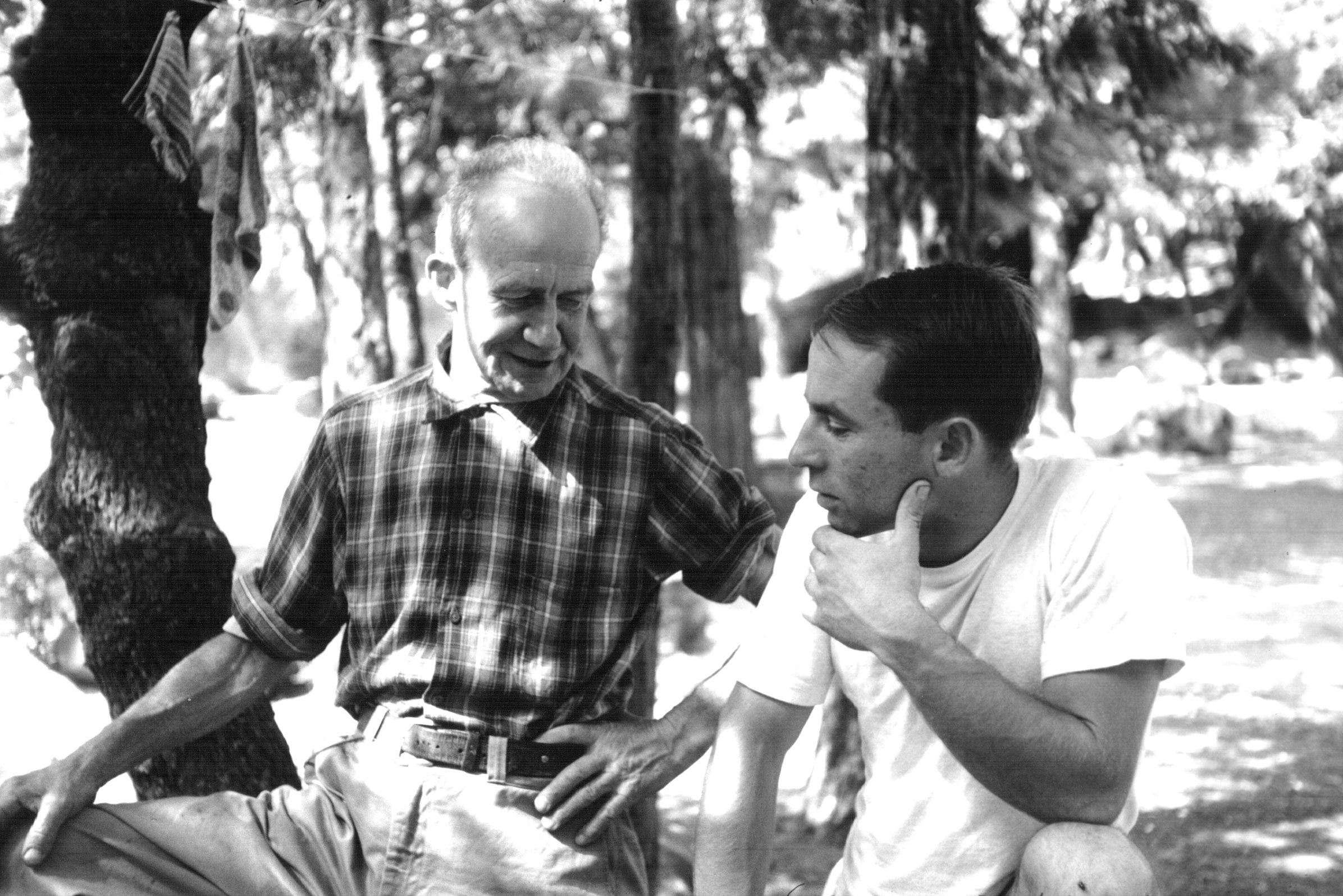 |
||
|
SALATHÉ AND CHOUINARD, 1964 |
||
|
In the fall of 1964 two great pioneers of American climbing met at Camp
4. Both were master
blacksmiths. Both
visionaries, able to see the way. Both
leaders in their generations – John Salathé and Yvon Chouinard.
Royal wrote about how deeply Salathé’s example
influenced us. He said, in
addition to Salathé’s great technical skill and the forging of special carbon vanadium
steel pitons, it was his “sense
of style that would set a standard for generations of climbers to come.
In those days, Yosemite climbing required the occasional bolt, or
sometimes a string of them, to overcome truly blank sections of
otherwise climbable rock. There
always existed the temptation to get out the drill before it was
absolutely necessary, to take the
easy way out, rather than screw up one’s courage, and work
tirelessly and inventively to find a way to get up without resorting to
the detested expansion bolt.
“Amazingly, Salathé
never succumbed to this temptation.
His bolts were always deemed by later parties, ‘justified.’
How hard that is to do. How
remarkable that he did it in his day, absent the goad of competition.
No one would have faulted him for placing twice as many bolts.
He was competing only with himself.
What was he thinking? Where
did he get this sense of style? Why
did he set these almost impossibly high standards for himself?
We don’t know. He
didn’t write or talk about these things.
His eloquence on such matters was pure action, and his actions
were to us spellbindingly persuasive.
American climbing would have been quite different had those of us
who followed in Salathé’s footholds not been so deeply impressed by the courage and
commitment to excellence of this thoughtful, taciturn, Swiss blacksmith
who came to California and taught Americans a thing or two about
climbing, and on whose shoulders so many of us have stood, reaching for
higher holds.” (Royal
Robbins, Voices from the Summit)
Writing about John Salathé, and the Lost Arrow chimney climb they did
together, Anton Nelson said: “One
thing is not an adequate
motive for climbing; that is egotism or pride.
Yes, most of us who climb usually play to the crowd, as such an
article as this may demonstrate. However,
mere self-assertion alone has a low breaking point.
To keep going day after day under heart-sickening strenuousness
requires a bigger, more powerful faith than in oneself or in any concept
of superiority.” (Sierra
Club Bulletin, 1948)
Salathé possessed a sensitivity and strength beyond what the rest of us
normally apply to life. For
example, he listened to the council of angels and benefitted thereby.
In short, he owned the most valuable attribute a traditional
climber can possess – “he knew things he didn’t know.”
Salathé
showed us what was possible. He
was a kind of “father” of Yosemite rock climbing.
One decade later Yvon
Chouinard also saw the need for tough, well-designed pitons; and an
inspiring standard in American wall climbing.
Chouinard’s Lost Arrow pitons were patterned after John Salathé’s
and his Muir Wall set a new standard on El Capitan. |
||